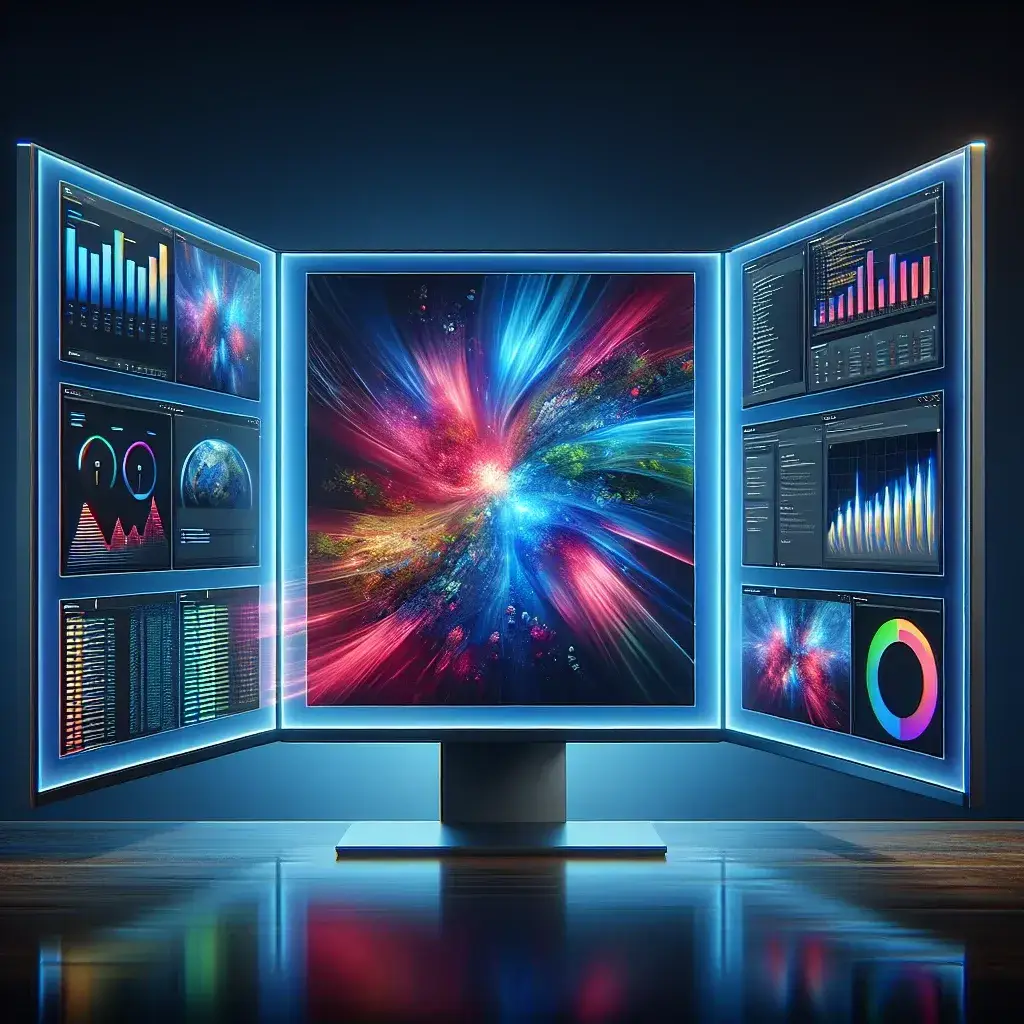
The need for multitasking has never been greater, and the ability to run multiple applications simultaneously on a single screen can significantly improve productivity. The topic of plasma monitors with split-screen functionality is intriguing as we delve into the capabilities and limitations of this technology. This article will discuss whether plasma monitors exist with split-screen functionality, their advantages, and how they compare to other screen technologies like LCD and LED.
Overview of Plasma Monitors
Plasma monitors were once a popular choice for displays due to their rich color depth and high contrast ratios. They utilize small cells containing electrically charged ionized gases to produce images. This technology offers some advantages such as deeper blacks and wider viewing angles compared to early LCD screens.
Advantages of Plasma Monitors
- Superior color accuracy
- Better contrast ratios
- Wider viewing angles
- Faster response times
However, Plasma monitors have some distinct disadvantages:
- Higher power consumption
- Heavier and bulkier designs
- Potential for screen burn-in
- Limited brightness compared to modern LED screens
Split-Screen Functionality in Monitors
Split-screen functionality refers to the ability to display multiple sources of content simultaneously on one screen. This feature is particularly useful for professionals who need to manage multiple applications concurrently, such as video editors, programmers, and financial analysts.
Typical Technologies with Split-Screen Features
- LED Monitors
- LCD Monitors
- Ultra-wide Monitors
- 4K Monitors
In contrast, plasma monitors are less commonly used today and may not readily offer native support for split-screen functionalities as seen in their LED or LCD counterparts.
Availability of Split-Screen Plasma Monitors
Though plasma technology offers several visual benefits, its declining market share has made it difficult to find plasma monitors with advanced features such as split-screen functionality. Most of the modern multitasking monitors are now built on LED or LCD technology due to their increased efficiency, wider availability, and support for high-definition content.
Comparative Overview
| Feature | Plasma Monitors | LED/LCD Monitors |
|---|---|---|
| Availability | Low | High |
| Split-Screen Support | Limited | Extensive |
| Power Consumption | High | Low |
| Image Quality | High | Very High |
| Screen Burn-In | Possible | Rare |
| Design | Bulky | Sleek |
| Brightness | Moderate | High |
Advantages of Split-Screen Functionality
Split-screen functionality brings several benefits for users:
- Increased Productivity: Handle multiple tasks simultaneously without the need for additional monitors.
- Flexibility: Easily switch between tasks and view real-time data.
- Space-saving: Maximizes desktop space by reducing the number of physical screens needed.
- Enhanced User Experience: Improves workflow and efficiency in professional settings.
Alternatives to Plasma Monitors for Split-Screen Functionality
While plasma monitors may not commonly feature split-screen capabilities, several alternative technologies should be considered:
LED Monitors
LED monitors are widely available and provide excellent support for split-screen functionality, along with superior brightness and energy efficiency. They come in various sizes and resolutions, making them a versatile choice.
Ultra-Wide Monitors
Ultra-wide monitors are designed specifically to support multitasking environments. Their aspect ratio offers abundant space for multiple applications to run side by side, enabling seamless workflow management.
4K Monitors
4K monitors offer high resolution and sufficient screen real estate to effectively manage split-screen setups. These monitors are excellent for detailed work requiring high clarity.
Conclusion
In summary, plasma monitors are not commonly equipped with split-screen functionality due to their declining usage and technical limitations. Modern alternatives like LED, Ultra-wide, and 4K monitors are better suited for multitasking environments, offering extensive support for split-screen features, better image quality, reduced power consumption, and sleek designs. As technology advances, it is essential to choose a monitor that meets your specific requirements while offering the functionality necessary to boost productivity and enhance your user experience.
Leave a Reply